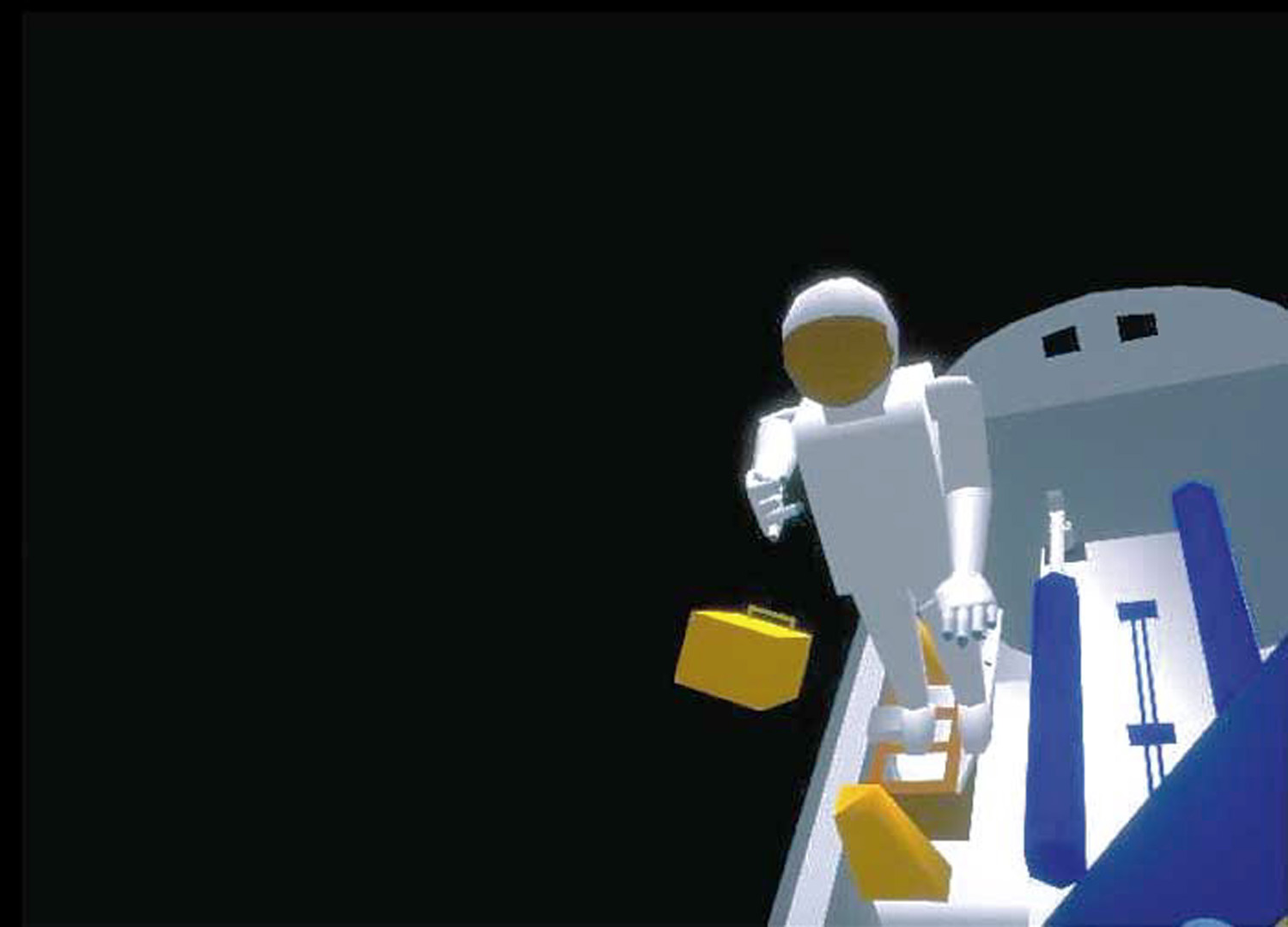“Where No One Has Gone Before” by Macedonia
Conference:
- SIGGRAPH 1996
-
More from SIGGRAPH 1996:


Type(s):
Entry Number: 37
Title:
- Where No One Has Gone Before
Program Title:
- Digital Bayou
Presenter(s):
Collaborator(s):
- Wolfgang Felger
- Fan Dai
- Torsten Frohlich
- Thomas Fruhauf
- Stefan C Muller
- Dirk Reiners
- Norbert Schiffner
- Gabriel Zachmann
- Rolf Ziegler
- Ammo Goettsch
- Hans Joseph
- Edwin Klement
- Bowin Loftin
- Patrick J. Kenney
- Robin Benedetti
- Chris Culbert
- Mark Engelberg
- Paige Lucas
- Mason Menninger
Project Affiliation:
- Fraunhofer Center for Research in Computer Graphics, Inc and University of Houston
Description:
Immersive real-time simulations (virtual environments) are now common in entertainment, military, marketing, and industrial applications. This project illustrates how virtual environments are used for collaborative, international training of astronauts. It is supported by common application protocols for distributed virtual environments and ISDN and ATM technologies for intercontinental communications network links. The protocols were developed by the Fraunhofer Institute for Computer Graphics in collaboration with the University of Houston Virtual Environment Technology Laboratory.
In Where No One Has Gone Before, American astronaut Bernard Harris and German astronaut Ulf Merbold rehearse a normal maintenance job for two astronauts: replacement of the Hubble Space Telescope’s solar array drive electronics. For the first time, astronauts far removed in physical space, one in Houston and the other in Darmstadt, perform complex tasks simultaneously in a virtual environment.
Virtual environments can also help engineers, scientists, and the public understand more down-to-earth systems such as the Volkswagen TDI (turbo direct-injection) Diesel Engine. In a second demonstration, Where No One Has Gone Before presents a virtual reality walkthrough that immerses participants in downtown Frankfurt and then transports them through the heart of the Volkswagen engine. The virtual environment dramatically demonstrates the unique features of the new TDI engine. It enables interactive visualization of how the engine performs compared to a comparable gasoline engine, why it is cleaner than most gasoline engines, and why it provides much better fuel economy.
The engine model was extracted from CAD data using an extended version of Virtual Design II to enable steering of time-dependent scenes so that an operator can trigger single events as well as control the direction and speed of the presentation time.
This visualization demonstrates the efficient operation of the combustion process. It is based on a finite-element grid created by Volkswagen engineers during optimization of piston shape in flow simulations. The finite-element data included velocity, temperature, and pressure at each point. The flows were pre-processed so they could be represented in real-time. Injection of the diesel particles and ignition of the gases during combustion was also pre-calculated. Algorithms were developed to calculate the flow lines and particle traces that enable the user to interactively visualize the flow field of the turbulent gases in the TDI cylinder and exhaust.
This project demonstrates that virtual environments can take you to work in outer space on a Hubble training mission or into the inner workings of an advanced diesel engine, and allows you to share those experiences in the same room or across the globe via highspeed networks.





